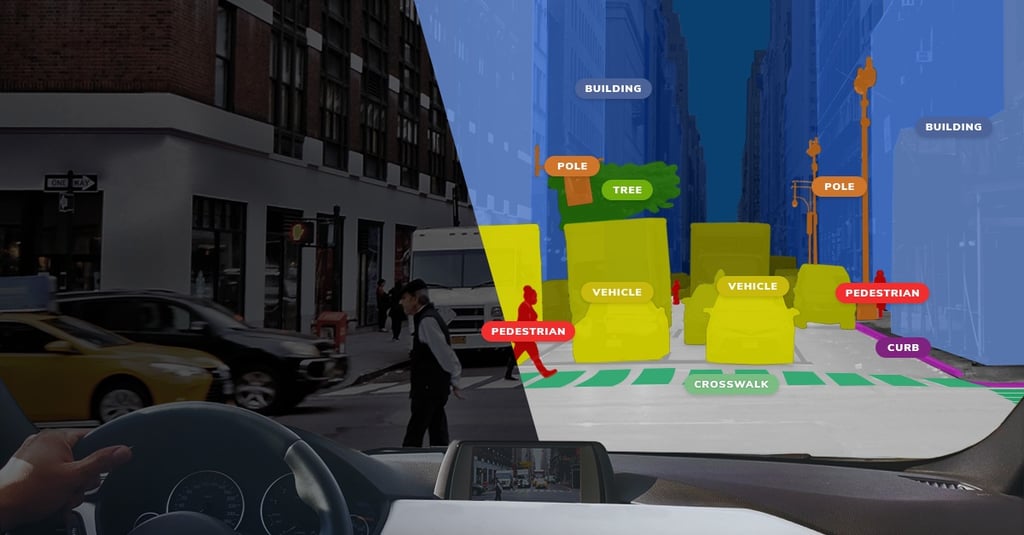Visual Data and the ‘Killer App’ for AI
Visual Data and the ‘Killer App’ for AI
- Last Updated: December 2, 2024
Guest Writer
- Last Updated: December 2, 2024



Today there are AI-powered apps that can tell you the breed of your dog or the species of a plant in seconds simply by taking a photo. When you upload an image to Facebook, your friends are identified immediately based on facial recognition technology.
The ability for machines to do this specific type of analysis has, in some cases, surpassed humans, and the lifeblood of these advanced AI technologies is visual data.
Why Does Visual Data Matter?
The entire concept of artificial intelligence is that machines can be built to perform the most human of tasks. In order to do that, they're modeled after human intelligence.
For instance, the most cutting edge AI systems employ deep learning or deep neural networks that are modeled after the neural networks of the human brain. (Granted, they are nowhere near close to functioning at the same capacity).
As humans, we learn by observing the world around us and collecting our own data in the form of language, actions and objects. On the other hand, computers have to be fed data by humans in order to “learn”. The process of learning for machines requires a lot more data, time and iteration than it does for humans.
As humans, sight comes naturally to us, and one of the first skills we learn is to recognize faces. Then, we identify objects around us and attribute meaning to them. For example, it only takes once for us to learn that fire is fire and it will burn us if we touch it, but machines take hundreds of examples of data to decipher the same level of meaning.
AI Systems and Visual Data
Vision is our most dominant sense, which explains why 65% of humans are visual learners. The majority (90%) of the data that our brain processes and analyzes is visual. Our brain actually processes images 60,000 times faster than text!
For artificial intelligence to progress, it needs to become more human. To do that, it requires more high quality visual data and sophisticated algorithms to translate information into something meaningful.
When it comes to AI, leading tech companies are all in. They know that AI is a game changer for how we live and work. Some posit that businesses won’t survive if they don’t plan for an AI-powered future, but the truth is that many of the technologies currently under development have a long way to go.

Image Credit: Cloud Factory
In a recent TechCrunch article, the Director of the Stanford University Artificial Intelligence Lab Fei-Fei Li, explained the importance of visual data:
“The only path to build intelligent machines is to enable it with powerful visual intelligence, just like what animals did in evolution. While many are searching for the ‘killer app’ of vision, I’d say, vision is the ‘killer app’ of AI and computing.”
We’re already dependent on visual content. However, Fei-Fei predicted that the future will be even more reliant on it, with increasing use of camera technology and sensors.
“More than 80% of the web is data in pixel format (photos, videos, etc.), there are more smartphones with cameras than the number of people on earth, and every device, every machine and every inch of our space is going to be powered by smart sensors.”
Accuracy is Everything
Everything from autonomous cars to AR/VR technologies rely on image recognition and image data processing. Without data and algorithms compiled with human intelligence, machines would still see objects as meaningless lines and shapes. Visual recognition attributes meaning to those objects, so that it’s possible for a computer to identify cars on the road and navigate around them autonomously.
Many believe that artificial intelligence is the future of business and innovation, and that is most likely true, but in many ways that future is dependent on accurate visual data.
Written by Courtney Wilson, Marketing Director at CloudFactory. Originally posted on CloudFactory.com.
The Most Comprehensive IoT Newsletter for Enterprises
Showcasing the highest-quality content, resources, news, and insights from the world of the Internet of Things. Subscribe to remain informed and up-to-date.
New Podcast Episode

How Drones and Telecom Enable Aerial IoT
Related Articles



